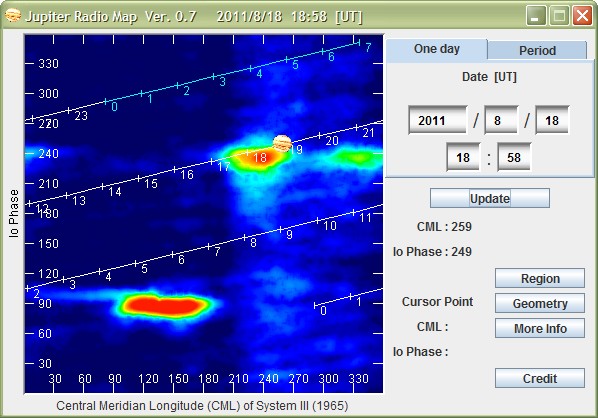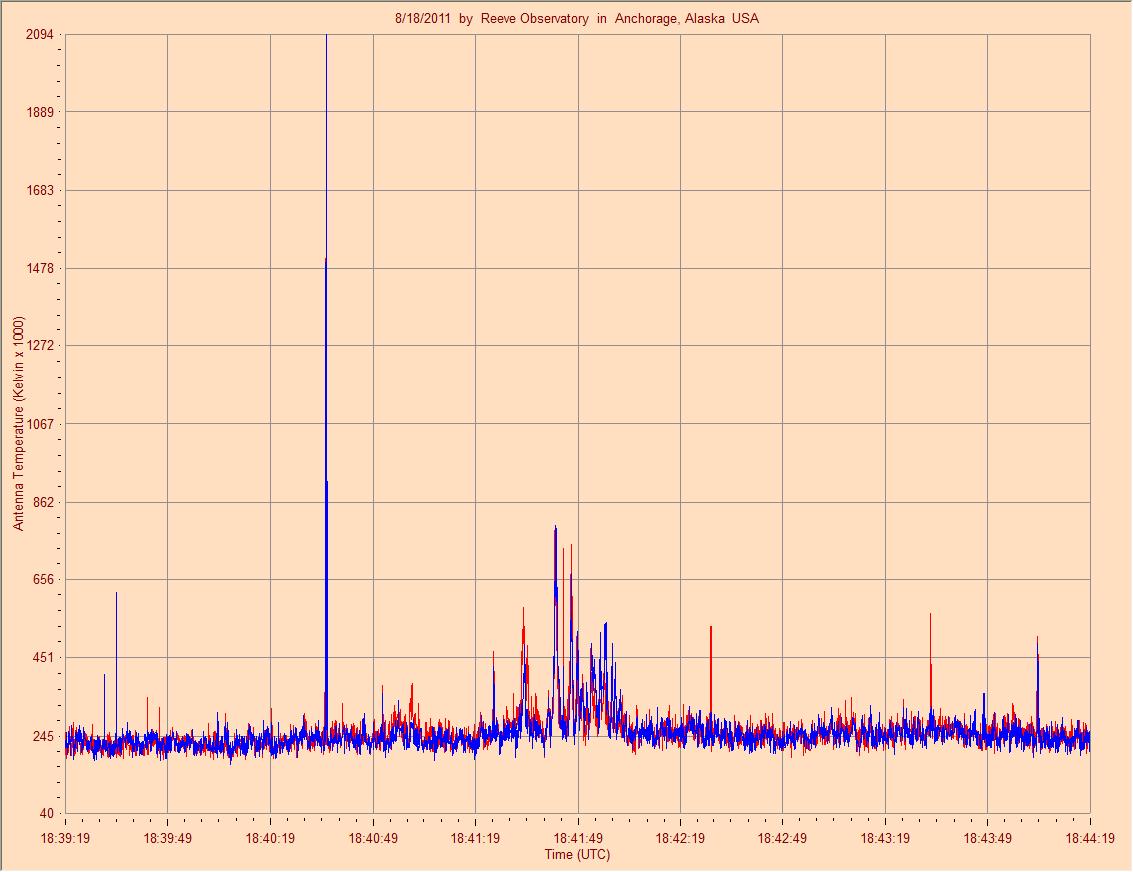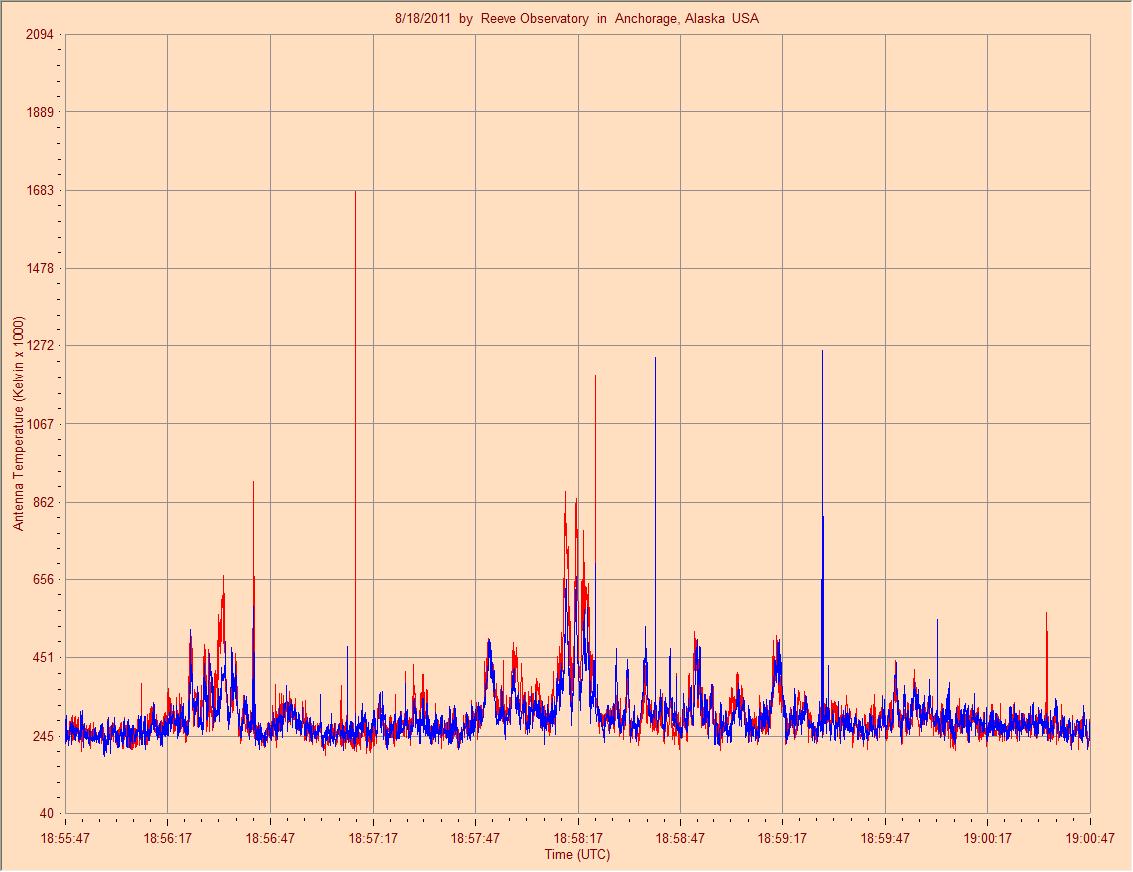Jupiter Io-A on 18 August, 2011
This was a day-time pass. We used two Icom R-75 HF Receivers, one tuned to 19.962 MHz (LSB), corresponding to the Red trace in the charts below, and the other tuned to 19.448 MHz (LSB), corresponding to the Blue trace. The receivers were connected to the antenna through a multicoupler. The antenna was an 8-element log periodic antenna pointed 244 degrees true (no tracking was used).
The Jupiter Radio Map immediately below is for reference and shows the orientation of the Io-A enhanced source at the observation time (note that the strongest bursting occurred late in the pass). The Radio SkyPipe charts show several bursting periods in the period between 1841 to 1858. All times and dates are UTC. A 10 second stereo sound file of the L-bursts is provided below the charts.
At the time of the charts Jupiter was at azimuth/elevation of approximately 244 degrees true and 28 degrees above the horizon.



Click here for a 10 second sound file of the L-bursts at approximately 1858